Top 20 Places to Visit in Madina | Best Places to Visit in Madinah
Madinah stands as the second most sacred destination for Muslims whereas Makkah holds the first place. The city acted as an essential refuge for both Prophet Muhammad (pbuh) and his companions following their migration out of Makkah. Every year numerous pilgrims journey to Madinah to venerate the Prophet (pbuh) and embrace his sacred legacy which rests in this city
Masjid-an-Nabawi stands as a holy mosque in Islam but this city houses various sacred historical sites which rank among the supreme Muslim religious sites in the world. Quba Mosque stands as the primary mosque in existence whereas Masjid-al-Qiblatayn functions as the center where Qiblah direction shifted from Jerusalem to Makkah. Generous pilgrims from worldwide origins travel to these holy sites throughout the city as well as others in order to embrace their significant spiritual and historical values to Top 20 Places to Visit in Madina.
Pilgrims visiting Madinah need to see essential landmarks that hold a significant historical place in Islam and the life of the Prophet Muhammad (pbuh). Madinah contains several important Ziyarat sites which deeply root in Islamic historical significance and provide doors for spiritual quests. This text will introduce you to the most significant destinations located in Madina as well as in Madinah.
Al-Masjid Nabawi
As a sacred destination in Muslim faith Al Masjid Nabawi (The Prophet’s Mosque) stands as an important holy spot throughout Islam. The Prophet Muhammad (PBUH) constructed the sacred building following his arrival in Madinah during 622 CE. Over the centuries, many expansions occurred to this building and today it exhibits Islamic architectural excellence in its present form. Muslim believers must visit this mosque to grieve at the burial site of Prophet Muhammad (PBUH) as it serves as their sacred pilgrimage location. this blog will help you find Top 20 Places to Visit in Madina.
Up to 1 million visitors find space at this Masjid which welcomes visitors during any part of day or night. The mosque contains three other sacred sites that include the Prophet’s (PBUH) tomb beneath its green dome and Rawdah ash Sharifah, The Noble Garden, and the Minbar from where the Prophet (PBUH) preaches. Many intricate designs cover all architectural surfaces from walls to gates and ceilings that visitors can discover throughout the space. Take note of sunset and sunrise moments by witnessing the automatic umbrella movements that occur in the Prophets courtyard for a complete visit.
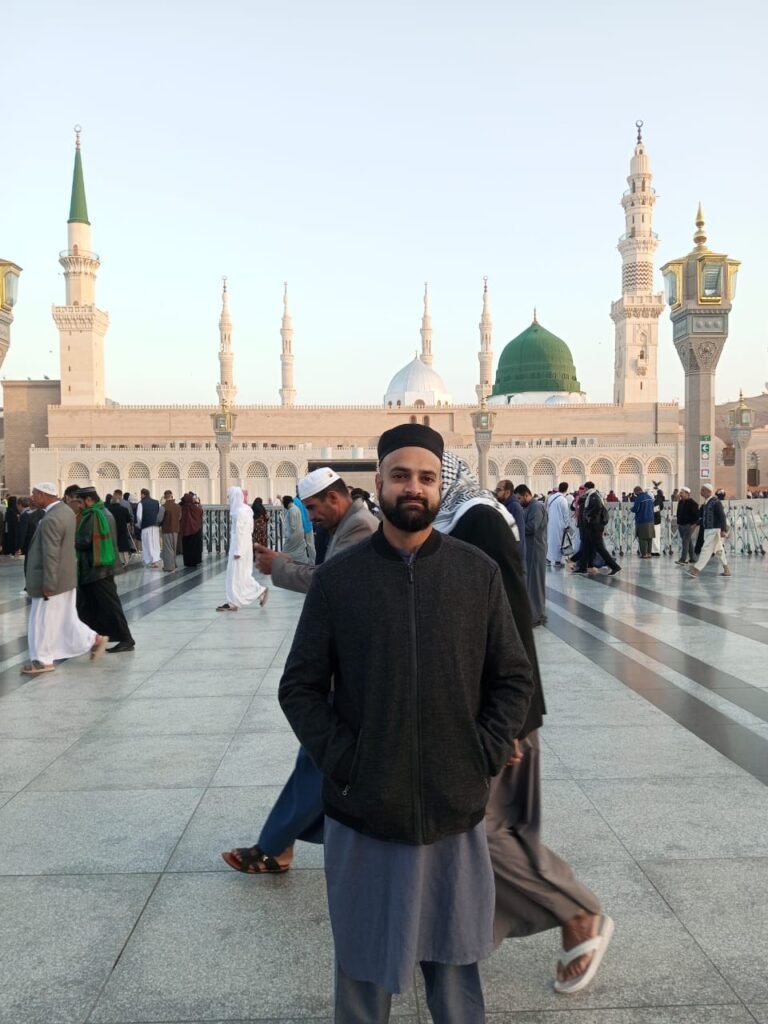
Rent a Car anywhere in the World
The Masjid Nabawi serves as an architectural marvel since Prophet Muhammad built it as the first mosque in Medina. Masjid Nabawi holds a place as the second mosque ever constructed after Quba Mosque making it currently one of the largest mosques worldwide. The current plan of construction for the mosque originated in the early 1990s by integrating architectural elements from the late Ottoman period and both the early Saudi period of construction and modern times.
The extensive Mosque of the Prophet now stretches over the complete area of Medina from the seventh century CE and embraces locations beyond the city boundaries which include Jannat ul Baqi and Saqifah Bani Saidah. Horizon view of the Prophet’s Mosque, with the Green Dome far in the background. this blog will help you find Top 20 Places to Visit in Madina.
The original mosque has seen many stages of growth which resulted in the present-day structure becoming an outstanding example of Islamic architecture. Muslims from across the world make journeys to perform pilgrimage at the mosque because it contains the final resting place of Prophet Muhammad (PBUH). A total of 1 million visitors can visit this Masjid any time during daytime or nighttime operating hours.
A place of worship functions as more than an area for prayer because it contains several other sacred sites including the Prophet tomb beneath its dome (which is green), Rawdah ash Sharifah (Noble Garden) and the Prophet’s (PBUH) former speaking platform (Minbar). While visiting the Masjid you can admire its detailed architecture that extends across walls and gates and ceiling structures.
Wondrous viewing opportunities of the opening and closing convertible umbrellas occur during the sunrise and sunset times in the Prophet’s courtyard where you can find a complete spiritual experience. A historic mosque named Al Masjid Nabawi or simply the Masjid Nabawi exists in Medina after Prophet Muhammad constructed and established it. History shows that Masjid Nabawi ranks as the second built mosque after the construction of Quba Mosque thus becoming one of today’s largest mosques in existence.
The mosque design from the early 1990s combines structures from the late Ottoman period as well as early Saudi and modern Saudi eras. Presently the Prophet’s Mosque extends across nearly every section of seventh century CE Medina whereas it encompasses additional religious sites such as Jannat ul Baqi and Saqifah Bani Saidah which originally lay beyond the city perimeter. Horizon view of the Prophet’s Mosque, with the Green Dome far in the background. this blog will help you find Top 20 Places to Visit in Madina.
WeGoTrip
Jannat ul Baqi
This primary Islamic holy ground operates as Baqi Al-Gharqad and accommodates over 10,000 graves that contain the resting places of Prophet Muhammad (PBUH) family members together with many companions. Visitors can engage a guide to tour the cemetery during which they present insights about the historic significance of Islamic history. The tombs of Imam Hasan Ibn Ali (2nd Imam) as well as Imam Ali Ibn Al-Husayn (4th Imam) Imam Muhammad Ibn Ali (5th Imam) and Imam Jafar Ibn Muhammad (6th Imam) rest there together with peace be upon them, in Jannat ul Baqi.

The Saudi King Ibn Saud conducted mausoleum destruction in Jannatul Baqi (Madina) on a Wednesday during Shawwal 8th 1345 AH which corresponded to April 21, 1925.During 1925 he executed his plans to destroy burial sites located at Jannat al Mualla (Makkah) containing the Holy Prophet (s)’s mother alongside his wife and grandfather as well as his other ancestors.
The Saudi Wahhabis sustain their campaign to destroy religious sites across Hijaz even during the present time. Professional scholars argue that events in Hijaz stem from a Jewish conspiracy against Islam which pretends to promote Tauheed. The plan seeks to eliminate Islamic history along with all its relics through structured elimination steps to prevent Muslims from retaining any connection to past Islamic events.
The Origins of Al-Baqi
The term Al-Baqi represents a literal meaning of tree garden. The site holds sacred power because great family members and companions of the Prophet are buried there so it receives the name Jannat Al Baqi. Uthman Ibn Madhoon became the initial person interred at Al-Baqi and passed away on the 3rd of Sha’ban in the 3rd year of the Hijra. The Prophet (s) ordered the cutting down of trees before burying his close companion beneath them and placing two stones on top of the grave site.
Following as the second year another child of Prophet Muhammad named Ibrahim passed away while still an infant which made the Prophet (s) weep deeply before his burial took place there. The site of Al-Baqi gained popularity for burials among the Madinans because the Prophet (s) greeting practice included saying “Peace be upon you O abode of the faithful! God willing we should soon join you. O’ Allah, forgive the fellows of al-Baqi”. According to God’s will we will soon become your fellow inhabitants. Through your mercy O’ Allah, grant forgiveness to the believers resting at al-Baqi”.
The burial space at al-Baqi received continuous enlargement. The burial site received over seven thousand companions of Prophet Muhammad as well as other members of the Ahlul Bayt (a). The burial site at al-Baqi holds the tombs of Imam Hasan Ibn Ali (a) as well as Imam Ali Ibn Al-Husayn (a) and Imam Muhammad Al-Baqir (a) and Imam Jafar Al-Sadiq (a).
Every relative of the Prophet (s) interred at al-Baqi includes his aunts Safiya and Aatika together with his aunt Fatima Bint Al-Asad who was Imam Ali’s (a) mother. The third Caliph Uthman received his burial near al-Baqi although its expansion during later years led to incorporation of his grave within the area. Great Muslim scholars including Malik Ibn Anas together with numerous other learned individuals found their final rest in the same place. All Muslims began to recognize this site as a significant historical destination.
Al-Baqi as viewed by historians
According to Umar Ibn Jubair Al-Baqi lies to the east of Madina when he visited the city. Through the gate of al-Baqi one can access the area. The first sight in the holy site is Safiya’s grave to your left along with the tomb of the great scholar Malik bin Anas who served as Madina’s teacher. The grave contains a small dome that stands over it.
The following years brought the burial of Prophet Ibrahim who died as an infant and caused the Prophet (s) to weep deeply. People started burying their dead at that site after the Prophet (s) started giving his greetings to the inhabitants by saying, “Peace be upon you, and O abode of the faithful! God willing, we should soon join you. O’ Allah, forgive the fellows of al-Baqi”. Through divine will we will soon become part of your resting place. The people requested in their supplication to Allah “O’ Allah forgive the fellows of al-Baqi”.
The scale of al-Baqi burial area grew progressively larger. An abundant number of seven thousand personas accompanied by the Holy Prophet (s) gained their final resting place there while numerous members from Ahlul Bayt (a) also met their end there. All four grandsons of Prophet Muhammad (S) received their final resting place at this sacred site.
Other close relatives of Prophet Muhammad (s) who received burial at Al-Baqi include his aunts Safiya and Aatika together with his aunt Fatima Bint Al-Asad who was the mother of Imam Ali (a). The third Caliph Uthman received an original burial outside al-Baqi until later development added his grave to the area. Great Muslim scholars including Malik Ibn Anas and numerous others joined the deceased at this place of burial during later times. The area acquired fame because of the historical importance that Muslims from everywhere acknowledge. this blog will help you find Top 20 Places to Visit in Madina.
Al-Baqi as viewed by historians
Umar Ibn Jubair describes the location of Al-Baqi while visiting Madina because it exists east of the city. You access the al-Baqi site by using the gate that holds its name. You will see the first grave of Safiya on your left after entering because she was the Prophet’s aunt followed by Malik bin Anas’s grave since he served as Madina’s Imam. The grave of this person contains a dome structure above it.
The renowned traveler Ibn Batuta returned to al-Baqi around the 15th century and gave the same depiction of this sacred ground that Ibn Jubair had done 150 years earlier. The sanctuary of al-Baqi houses numerous graves from the Muhajirin and Ansar and many companions of the Prophet (s), even though the majority of those buried there have unidentified names according to him.
Al-Baqi managed to preserve its sacred status during centuries until the Wahhabis gained power in early nineteenth century. The Wahhabis carried out vandalism that caused dishonor to both martyr and companion graves in this sacred burial location. The disagreement between Muslims led the extremists to call opposing believers “infidels” which resulted in their execution.
The First Destruction of Al-Baqi
According to Wahhabis the practice of shrine visiting at gravesites of the Prophets and Imams and saints became heretical because it amounted to polytheistic worship. Many people who did not follow their belief system received execution sentences while their property became state property. Since their initial attack on Iraq until the present day the Wahhabis together with Gulf rulers have executed systematic massacres targeting Muslims who did not accept their beliefs. A profound sense of respect towards those resting places existed among most members of the Islamic World. If the Islamic reverence towards Prophet Muhammad’s (s) grave was not authentic then Caliphs Abu Bakr and Umar would not have chosen to be buried in its vicinity.
The Wahhabis made unsuccessful efforts to establish themselves in Hijaz during the period from 1205 AH to 1217 AH. The Muslim residents of Taif became victims of massacre after the Wahhabis achieved victory in the year 1217 AH. In the year 1218 AH the militants made their way into Makkah to wipe out all religious sites and to destroy the roof protecting Zamzam’s well.
The Wahhabi movement carried out desecration at al-Baqi along with every mosque as they entered Madina during 1221. Attempts failed to destroy the burial place of the Prophet when organizers decided not to proceed with the demolition. Year after year Muslims from Iraq and Syria and Egypt together with Egypt faced bans when attempting Hajj entry to Makkah. Before granting entry to the holy site King Al-Saud required pilgrims to submit to Wahhabism because non-adherence resulted in religious classification as non-Muslim.
The destruction of Al-Baqi reduced it to complete demolition so there remains no trace of any tomb or burial sites. The Saud family pursued further adjustments in their operations despite their achievements so far. The king of Saudi Arabia demanded to see where his attendants kept the valuable treasure from inside the Prophet’s shrine. Wahhabi followers seized the treasure which they allocated for their personal expenses.
Thousands of Muslims escaped Makkah and Madina to protect their existence from the intensifying persecution and pressure imposed by the Wahhabis. Muslims worldwide condemned the Saudi brutal acts by urging the Ottoman Empire Caliphate to protect the holy sites from complete annihilation. The head of the Al-Saud tribe Muhammad Ali Basha launched his Hihi War against Hijaz while tribe support enabled him to recover control of Madina and Makkah where he ousted his Saudi opponents. The whole of the Muslim world expressed its triumph through joyful national celebrations. The ceremonial activities in Cairo maintained themselves throughout five consecutive days.
People rejoiced because the ban on free Hajj service and shrine reconstruction had ended.
The Ottoman Caliph Abdul Majid initiated sacred place reconstruction works which his successors Caliphs Abdul Hamid and Mohammed continued at the fundamental Islamic sites during 1818 AD and 1848 and 1860 AD. Seventeen hundred thousand pounds worth of renovations happened in 1848 and 1860 AD with tomb donation funds serving as the main source.
This list contains only some of the graves and shrines that were erased
The Al-Mualla graveyard in Makkah holds the graves of Sayyida Khadija bint Khuwailid (a) and Amina bint Wahab and Abu Talib and Abdul Muttalib who were all ancestors of the Prophet (s).
- The grave of Hawa (Eve) in Jeddah
- The grave of the father of the Prophet (s) in Madina
- The house of sorrows (Bayt Al-Ahzan) of Sayyida Fatima (a) in Madina
- The Salman al-Farsi mosque in Madina
- The Raj’at ash-Shams mosque in Madina
After his Makkah emigration the Prophet (s) settled in Madina where he resided at this house.
- The house of Imam Ja’far Al-Sadiq (a) in Madina
- The complex (mahhalla) of Banu Hashim in Madina
The residence of Imam Ali (a) functions as the place where both Imam Hassan (a) and Imam Hussain (a) received their births.
- The house of Hamza and the graves of the martyrs of Uhud (a)
Al-Manakha Square
This blog will help you find Top 20 Places to Visit in Madina. The commercial DNA of Madinah finds its reflection at Al Manakha Square where business activity thrives. The vibrant commercial center established itself as a fundamental trading center serving the city while maintaining strong connections to the life of Prophet Muhammad (PBUH). Madinah operated as one of the region’s main commercial centers during that time so Al Manakha Square became a primary market for businessmen.
The square operates as a modern commercial center which combines contemporary shopping avenues with preserved historical elements from its past. The space allows people to discover traditional local items and modern products at a market they can feel throughout its historical depth. According to the Saudi Press Agency (SPA), the shopping activity in Souq Al-Manakhah has surged because of the increased international tourism flow to Madinah since the era of Prophet Muhammad (peace be upon him).
Souq Al-Manakhah stands southwest of the Prophet’s Mosque as an authentic heritage destination that follows the history of the Prophet. When the Madinah citizens asked Prophet Muhammad to pick their marketplace he decided upon this area according to what his companion Ataa Bin Yasar documented. No buildings existed in Al-Manakhah after Caliph Omar Bin Al-Khattab (may Allah be pleased with him) forbade construction because he dedicated the market to Muslim use. People could find shelter at Al-Manakhah while shopping at its open market for pilgrims.
Prince Faisal Bin Salman initiated the rehabilitation of Souq Al-Manakhah based on his order as emir of Madinah Province to establish regular vending practices for vendors. The arrangement of merchandise kept to traditional methods which had existed since ancient times. The historic market received an identity card system through a committee that designated 1,000 hawkers their specific locations to protect its traditional nature.
Al-Salam Gate
The important entrance known as Al-Salam Gate provides exceptional spiritual value as it belongs to Al-Masjid Nabawi. Madina has preserved Al-Salam Gate as an emblem of its cordial character while maintaining its status as an architectural masterpiece with religious value. The Islamic tradition declares entrance through Al Salam Gate presents religious blessing because it gives visitors access to the Prophet’s Mosque with its amplified prayer power. People stop at this spot to admire the mosque from afar before they meditate about the historical value of the place.
The well-designed architectural structure of the landmark qualifies it as an important destination within Madinah. The western Rawda e Rasool side hosts the ancient and principal Masjid al-Nabawi gate named the As-Salam Gate Bab as-Salam which directly translates into the Gate of Peace or Tranquility. The Mosque received its foundation from Caliph Omar during 640 CE (18 Hj.) when he constructed it as part of the western wall. this blog will help you find Top 20 Places to Visit in Madina.
Spiritual Significance of Riaz Ul Jannah
Riaz Ul Jannah stands out as a Garden of Paradise because Prophet Muhammad (PBUH) included it in his hadith thus drawing millions of Muslim pilgrims who come to pray Salah and recite the Quran for divine blessings. The sacred garden represents paradise here on Earth. The Prophet Muhammad (PBUH) proclaimed that my house stands between my pulpit where I preach and a garden leading to Paradise’s gardens with my pulpit located above my fountain tank (i.e. Al-Kausar).
Performing salah at Riaz Ul Jannah provides the prayer value of one thousand times more powerful than regular mosques yet lower than Al-Masjid Al-Haram. Until recently the Prophet’s Mosque floor featured red carpeting across all its spaces except Riaz Ul Jannah where green carpeting distinguished that section from the rest of the mosque. All areas of the Prophet’s Mosque now feature moss green carpet which extends the prayer space for pilgrims.
Multi-national devotees who travel to visit the Prophet’s Mosque seek to perform prayer at Riaz Ul Jannah as it has become one of the most visited sacred spaces worldwide. Such large numbers of visitors caused the Saudi Government to create an online reservation system for Rawdah prayer times. The Rawdah contains eight main supporting columns. These eight pillars bear the specific location where palm tree trunks originally created support for the first roof installation of Masjid Al-Nabawi.
Riaz Ul Jannah, the “Garden of Paradise” in Masjid Al Nabawi, holds immense spiritual significance for Muslims worldwide. The gateway to paradise known as Riaz Ul Jannah continues to enchant believers because it began during the time of Prophet Muhammad (PBUH) and because it has a special status as heavenly grounds. Spiritual nourishment along with peace seeking activities await pilgrims visiting riazul jannah when they engage in prayers and supplications. Believers can achieve a peaceful religious encounter in this holy site through proper utilization of its guidelines and scheduling process. The connection to heavenly existence becomes most evident when experiencing Riaz Ul Jannah. this blog will help you find Top 20 Places to Visit in Madina.
Jabal Uhud or Mount Uhad
Muslims recognize Jabal Uhud (Mount Uhud) as a sacred location because it holds immense importance for its association with the vital Battle of Uhud from early Islamic times. In 625 CE Prophet Muhammad (pbuh) joined forces against the Quraish tribe of Makkah for the Battle. During the battle the Muslim army faced defeat yet the Prophet (pbuh) survived unharmed while his dear relative Hamza ibn Abdul Muttalib and numerous other companions ended up martyred during the confrontation.
Jabal Uhud represents the largest mountain in Madinah that stands 6.4 kilometers north of the city where believers find a symbol of endurance and dedication as well as faith. The historical significance of Jabal Uhud increases because numerous Prophet Companions who died at the Battle of Uhud are reputedly buried next to the mountain base. Visitors to Jabal Uhud have an opportunity to experience profound respect through understanding the remarkable dedication of Muslim early believers thus creating a heartfelt and emotional spiritual connection. History marks the Uhud Battlefield as one of the most significant sites of Islamic heritage.
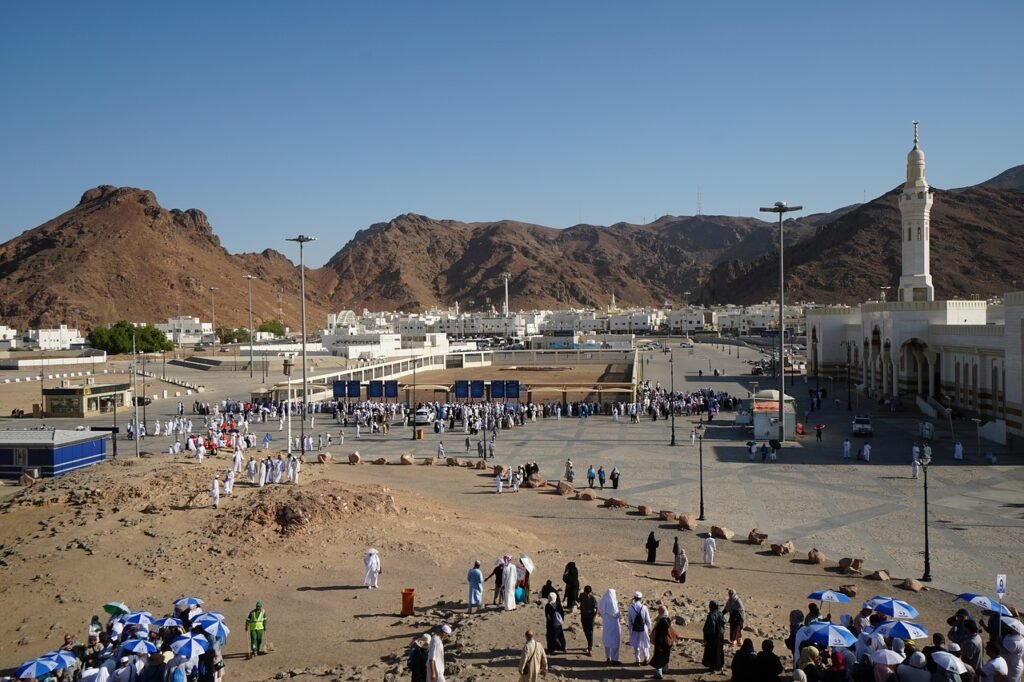
In 625 CE on this ground the Battle of Uhud maintained a significant role in early Islamic history as its primary historical event. The forces of Prophet Muhammad (PBUH) fought against the Quraish at the Battle of Uhud because they aimed to avenge their loss at Badar. The Muslims gained victories in the beginning before they needed to withdraw and eventually suffered an important defeat. Today visitors find a memorial at the site which honors the martyrs including the Prophet’s uncle Hamza ibn Abdul-Muttalib along with others.
The Uhad Battlefield allows visitors to contemplate historical sacrifices from this vital moment in Islamic times thus deepening their knowledge about early Muslim hardships. Uhad Mountain stands as a historic site which exists in the north of Madinah situated five kilometers north of Masjid Nabawi. During the Battle of Uhud seventy of the Companions lost their lives yet the conflict resulted in no decisive outcome. The principal outcome of this conflict is that Hamza lost his life. The Battle of Uhad fought at this place converted it into an excellent destination for people performing hajj and umrah rituals in the city.
this blog will help you find Top 20 Places to Visit in Madina.
Masjid Abu Bakar siddique
Muslims treasure Masjid Abu Bakar as it bears a name that honors the first Muslim ruler after the Prophet Muhammad – Abu Bakr al-Siddiq. The Prophet Muhammad (PBUH) trusted Abu Bakar as his closest friend who achieved great importance in spreading Islam during its early period. When the Prophet passed away Abu Bakar took the role as the first leader of the Muslim community while guiding it through its vital expansion period. Built on the residence area of Abu Bakar this mosque allows visitors to witness the history of city governance through its location.

Masjid al-Qiblatain
The Mosque of the Two Qiblas known as Masjid al-Qiblatayn stands among the most significant historical places in Madinah. The Prophet Muhammad (pbuh) received divine command at this site to alter Muslim prayer direction from Jerusalem toward Makkah specifically pointing toward the Kabah. The landmark occasion transformed Islamic history and made Makkah the prime location for Muslim worship.
At this moment in development the Muslim community obtained its special religious identity through the Qiblah’s direction shift. Two Mihrabs initially exists at Masjid al-Qiblatayn because it needed to show believers which direction for prayer into Jerusalem or Makkah. Today the mosque preserves one Mihrab that points toward Makkah while demonstrating how the Prophet (pbuh) followed divine messages. The historical importance of this undefined moment guides pilgrims to understand its enduring impact upon the Islamic world during their visit.this blog will help you find Top 20 Places to Visit in Madina.

Islamic prayer history views Al Qiblatain Mosque as an important religious site. The Prophet Muhammad (PBUH) received divine command to shift the Qibla from Jerusalem to Makkah at this location. The moment of Qiblāt Change occurred in 624 CE when it established Muslim identity and separated Islamic religious practice from other monotheistic religions. Today Al Qiblatain Mosque showcases this essential historical moment when the Qibla changed and continues to welcome people who wish to know about this transformative spiritual event. In 623 CE the Muslim worship place called Masjid received construction from Sawad Bin Ghanam Bin Kaab and possesses two mihrabs that guide Muslims to their prayer direction.
Pilgrims seek out Masjid Al Qiblatayn as a site of important Islamic devotion and also recognize it as one of the earliest existing mosques worldwide. Religious seekers should experience visiting this mosque to enjoy its devotional and spiritual atmosphere particularly during the Maghrib prayer.
Masjid al Ghamama
Visitors to Madinah must visit the Mosque of Al-Ghamama which serves as an important religious spot known for its unusual tale of historical significance. The Prophet (PBUH) conducted Salat Al Istisqa (prayer for rains) at this masjid when excessive drought occurred and the appearance of clouds immediately led to heavy rainfall. The historical place can be explored on foot as it exists within a walking distance from Al Masjid Al Nabawi.this blog will help you find Top 20 Places to Visit in Madina.
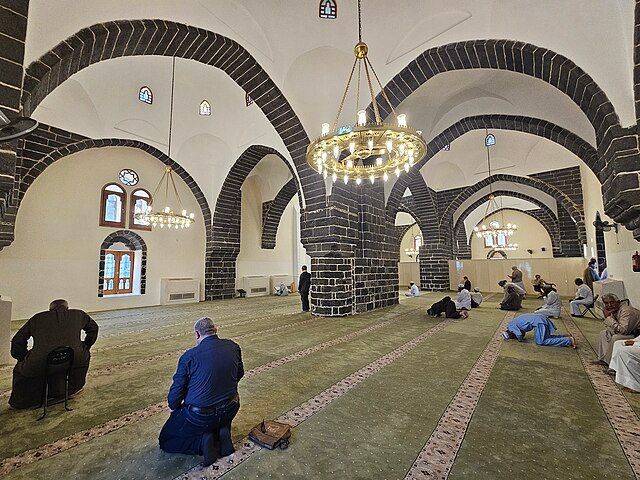
Battle of Badar site
The entire Muslim history remembers the Battle of Badar as its first and most significant battle against 1000 Quraish warriors who fought 313 Muslims including Prophet Muhammad (PBUH). Through His divine assistance and the victory of Prophet Muhammad and his forces was realized. Badar lies as a small town outside the peripheral area of Madinah at a distance of 135km from the main urban center.
The site can be reached through easy private taxi booking services. Visitors can explore both the valley and mountain range by going to the Badar area where they can experience the historic victory of our Prophet when he fought the Battle. During 624 ce, the Prophet Muhammad achieved a significant military victory at Badar which transformed the early Muslim ummah from defensive protection into a platform for growth and security expansion.
The damage suffered by Meccan trade following the clash strengthened the moral spirits of Muslims to establish their authority in the quest for control over the sacred city. The battle holds special esteem in Islamic tradition because it is the sole conflict mentioned by name within the Quranic text.
The Hijrah (“Emigration”) caused Muhammad and his Meccan followers to leave their hometown for Medina in 622 after they received an invitation to stay there. The Medinese accepted Muhammad’s Meccan followers under the Constitution of Medina yet this welcome did not eliminate their distinction as the muhājirūn from the broader social economic life of the city. Unprovoked Quranic revelations allowed Muhammad and his followers to attack the Quraysh tribe because Mecca denied their worship access to Islamic holy grounds and launched attacks against the muhajirun Muslims.
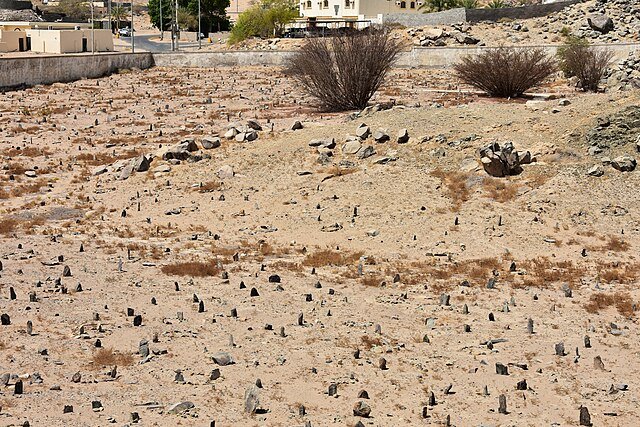
Abu Sufyan from the Umayyad clan led the valuable caravan during the month of Ramadan two years after the Hijrah when a major raid took place. Traditional sources state that Muhammad formed a raiding force of approximately 300 members consisting of muhajirun and ansar which he led as the commander after learning about the caravan. The wells of the caravan route near
Medina were blocked with sand which led Abu Sufyan’s army to fight at Badar against Muhammad’s forces. Battle began at Badar with a traditional fighting ritual where three combatants from each side faced off then armies engaged in general conflict. During the charge Muhammad scattered dust which entered the eyes along with the noses of multiple Meccan fighters. A well-organized Meccan fighting force of 1,000 men lost to Muhammad’s troops which delivered a total victory along with numerous deaths among influential Meccans. This blog will help you find Top 20 Places to Visit in Madina.
The Muslim community considered the victory at Badar so significant it became a moment they declared was caused by divine intervention. The victory at Badr secured divine approval of the new Islamic religion to the Muslim community while demonstrating the power and resolve of Muslims to defy the dominance of the Quraysh. A series of ummah victories behind Muhammad led to the Quraysh finally
accepting Muslim worship at Al Masjid Al Haram in 629 but did not include the defeat at Uḥud in 625. The long-standing conflict between Muhammad and the Quraysh ended when the Quraysh submitted their authority over Mecca thus granting Muslim status to all their members during 630. The men who fought with Muhammad at Badr formed a group of Prophet Companions known as the badriyyun. this blog will help you find Top 20 Places to Visit in Madina.
Bir al-Ghars or Ghars Well
Bir al-Ghars stands as an important well in Islamic heritage which Muslims refer to as Beer E Ghars. The Prophet Muhammad (pbuh) both drank from the well of Bir al-Ghars and used its water for Wudhu before his prayers. Muslims attribute a significant meaning to this well because the Prophet Muhammad (pbuh) required to use its water for his burial preparations before he passed away.
Modern construction efforts around the well have improved facilities for pilgrims visiting the site. The complex houses three main features: a mosque and outer wall protection and a sabil renovation that offers convenience to traveling guests. Pilgrims who visit Bir al-Ghars find a spot for contemplation because they can establish spiritual links with Prophet Muhammad’s (pbuh) teachings about the natural resources and territories of this earth. Your visit to this site enables you to honor Prophet Muhammad (pbuh) through understanding the sacred Islamic teachings about water as well as purity. this blog will help you find Top 20 Places to Visit in Madina.

Masjid Quba
According to Islamic tradition the first mosque built by Prophet Muhammad (pbuh) emerged after his migration from Makkah to Madinah near the suburb of Medina. Islam describes how Prophet (pbuh) began Masjid Quba with its first foundation stone then the mosque became a pivotal place for Muslim worship where the early Muslims gathered for religious guidance and community services. The mosque’s historical value comes from an Islamic tradition which states that Prophet Muhammad (pbuh) likened praying at Masjid Quba to emblematic of an Umrah pilgrimage.
Muslims make Masjid Quba their destination for spiritual renewal because it rests close to Masjid an-Nabawi. Islamic construction during its early period comes to life through the mosque’s straightforward yet elegant architectural beauty which still attracts millions annually. The mosque of Masjid Quba holds remarkable spiritual and historical worth. The prophet Muhammad (PBUH) constructed this mosque right after moving to Medina which makes it the inaugural Islamic mosque in history. The Prophet Muhammad alongside his companions established this mosque which continues to commemorate the first days of Islam.
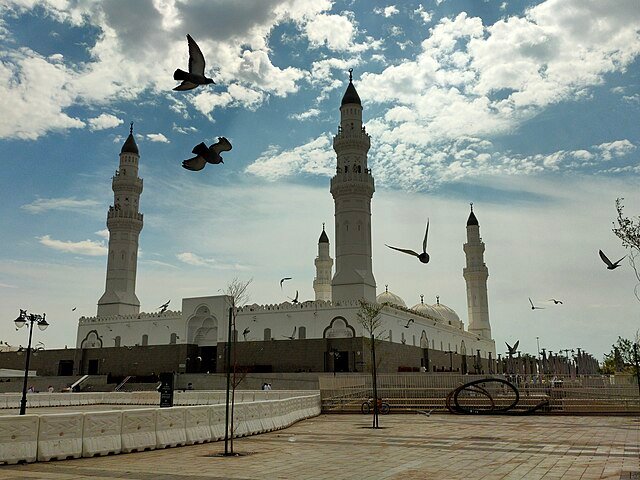
According to Prophet Muhammad (PBUH) through genuine reports all worshippers at Masjid Quba receive the same rewards as performing an Umrah pilgrimage. Tourists visit the site as a place for contemplation and meditation while seeking an opportunity to reconnect with Islamic foundations. Away from all other mosques in the world stands the ancient Masjid Quba which makes Madinah one of the most spectacular cities. At Masjid Quba the Prophet Muhammad (PBUH) together with his companions set the very first foundation of a mosque which later became known as the world’s first place of worship.
The unique architectural masterpiece of Masjid Quba displays complex detailing through its distinguished entrance gates and pair of minarets along with its enormous domes and marble-clad courtyards and prayer chambers. this blog will help you find Top 20 Places to Visit in Madina.
Salman al-Farsi Dates Farm
Salman al-Farsi Dates Farm serves as an important location where visitors learn about the early Islamic community and its relation to the cherished companion Salman al-Farsi during the Prophet Muhammad’s (pbuh) time. Through authentic historical records it is documented that Salman al-Farsi emerged as the initial Persian Islamic convert. The tale reveals his determined spirit alongside his devotion to Islam where he fought hard to unite with Prophet Muhammad (pbuh) in Madinah.
Salman al-Farsi obtained his freedom through the creation of this farm which belonged to his Jewish master. The Prophet (pbuh) together with his followers planted 300 date palms under a contract that granted freedom to Salman. Modern-day visitors can experience the flourishing farm at Salman al-Farsi where they can honor his story as well as the Islamic principle of freedom through religious conversion. Farm visitors can consume dates produced from the property since these fruits display both their nutritional worth and their significance in history. this blog will help you find Top 20 Places to Visit in Madina.
The Seven Mosques
Pilgrims come to the Seven Mosques complex which stands significantly west of Sala’ Mountain in Madinah. Esteem for these mosques stems from their historical connection to the important Battle of the Trench in Islamic history. The Muslims defended themselves against Quraish invaders by creating trenches in 627 CE while several historic early Islamic events unfolded near these defense works. Seven religious sites at Even Mosques complex include Masjid Salman al-Farsi, Masjid al-Fath, Masjid Ali bin Abu Talib, Masjid Umar bin Khattab, Masjid Saad bin Muadh, Masjid Abu Bakr al-Siddiq, and Masjid Fatimah az-Zahra. This blog will help you find Top 20 Places to Visit in Madina.
The number of mosques in Madinah varies based on events and companions who built them and devotees admire the brave actions which occurred throughout history. Pilgrims usually include Masjid al-Qiblatayn in their pilgrimage even though it rests approximately one kilometer from the Seven Mosques complex because the mosque maintains deep historical and spiritual significance.
In Madinah one can visit the Trench Battlefield to witness the site of the Battle of the Trench (Ghazwa Khandaq) that occurred in 627 CE. The Muslims launched this defensive operation to safeguard the city against multiple enemy groups which united against them. The Prophet Muhammad’s (PBUH) leadership guided Muslims to construct a defense trench to guard Madinah against enemy invasion.
Muslim troops triumphantly completed the battle after constructing the trench leading it to symbolize their collective unity and brilliant strategy. Tourists who visit the site can both observe and appreciate the strategic battlefield decisions that Muslim forces made along with the superior strength of the community during that time. this blog will help you find Top 20 Places to Visit in Madina.
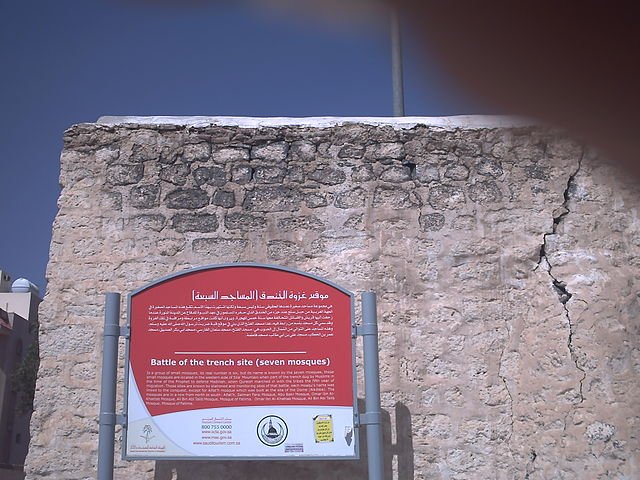
This blog will help you find Top 20 Places to Visit in Madina.
Al Hijaz Railway Station & Quba Square
The Al Hijaz Railway Station serves as an important historical artifact which represents an essential advancement in Arabian Peninsula transportation matters during the Ottoman-period. The railway line transported passengers from Madinah to Damascus as a major component of the Ottoman attempt to modernize their regional control area. People today visit the station because it functions as a historical site to witness its Ottoman architectural elements along with railway remnants from that period. Visitors seeking historical insight into Arabian Peninsula development through railway history will find their quest satisfied at the Al Hijaz Railway Station.
The social and cultural center of Quba Square functions as an authentic local destination that attracts the community’s residents. During your visit to Madinah the Hejaz Railway Museum in the central Saudi Arabian city presents an interesting attraction. This location exists as proof of the vital role that the Hejaz Railway played through its contributions to local advancement in the region. The museum guides its visitors through time to study significant historical events as well as engineering achievements and cultural patterns of this well-known railway.
The early 20th century Hejaz Railway represented a monumental project which connected between Istanbul in Turkey and Madinah in Saudi Arabia and its neighboring regions. The railway became essential in transforming both Arabian Peninsula history and the regional transportation systems that carried people along with goods. Through its space the museum establishes cultural dialogue since it enables people from different ethnicities to connect with the historical legacy of the Hejaz Railway.

The site brings different cultures together while it also provides a forum for understanding the common historical background of the Arabian Peninsula. this blog will help you find Top 20 Places to Visit in Madina.
This blog will help you find Top 20 Places to Visit in Madina.
Wadi e Jinn: The Valley of Illusions and Legends
Near Abha lies Wadi e Jinn which Saudi Arabian locals call the Valley of the Jinn within the Al-Namas governorate about 30 kilometers beyond Abha. The unique characteristic of this valley stems from this strange situation that causes vehicles to elevate themselves against gravity without noticing any mechanical power. The local people claim jinn exist in the valley because of their presence in Islamic teachings about supernatural beings. Physically and geographically unique features of this location combined with physical laws explain the peculiar phenomenon that occurs there.
The scientific proof about Wadi e Jinn does not diminish its attraction as visitors from Saudi Arabia together with international tourists keep visiting this place. Visitors seek to observe this illusion and capture this mysterious atmosphere as they think about legendary charm and natural world mystery.
The Beautiful Names of Allah Exhibition: A Spiritual Journey
The Beautiful Names of Allah Exhibition presents an all-encompassing exhibition which uses Islamic tradition to exhibit and honor the 99 beautiful names and attributes of Allah. The exhibition presents an exclusive destination for people to study divine nature alongside exploring regional artwork and cultural elements. Each of the 99 names of Allah is explained through this exhibition’s comprehensive description. This blog will help you find Top 20 Places to Visit in Madina.
Visitors can experience a spiritual engagement through digital displays and moving presentations and artistic portrayals that help them merge with God’s divine characteristics including His qualities as the Most Merciful the All-Knowing and the Ever-Forgiving. The space enables people to conduct both spiritual meditation and contemplation about the endless qualities of divinity. this blog will help you find Top 20 Places to Visit in Madina.
Dar Al Madinah Museum: Unveiling the City’s Rich Heritage
In the center of Madinah stands the time machine gateway known as Dar Al Madinah Museum. The museum exists to protect and display the historical along with cultural and architectural elements of Madinah. This institution displays an extensive selection of artifacts and manuscripts and exhibitions to show the complete transformation of this city through centuries. People who visit the exhibition can view artifacts about Prophet Muhammad (peace be upon him) and his companions as well as the Islam’s first era community.
Madinah Museum reveals important information about the early Islamic period and the historical development of its community members. Visitors can experience interactive education through the facilities at Dar Al Madinah Museum. The museum provides interactive digital displays together with visual explanations and educational exhibits that animate historical stories for their visitors.
Educational facilities at this destination allow people of all ages to gain a comprehensive perspective about the importance of Madinah. this blog will help you find Top 20 Places to Visit in Madina.
ٹhis blog will help you find Top 20 Places to Visit in Madina.
Assalam Museum: A Gateway to Islamic Heritage
This museum focuses on protecting and spreading knowledge about all matters connected to Islamic heritage. Its wide range of materials includes handwritten documents alongside both contemporary and historical artifacts and artworks which portray Islamic civilization from various perspectives. As people visit Assalam Museum they discover Islamic historical perspectives while learning about scientists and scholars of the Muslim world together with their artistic accomplishments.
Visitors encounter an interactive learning environment because the museum uses multimedia displays and informative presentations with interactive exhibits. This blog will help you find Top 20 Places to Visit in Madina.The museum maintains ongoing connection with the vicinity people together with arrivals from across the world. The location serves as a space for cultural events and lectures and exhibitions which create opportunities for intercultural dialogue to better understand Islamic values and principles. Visitors should experience the city by seeing the Madinah Museum which presents vital Islamic geographical exhibits. All historical information beginning from the time of Prophet can be found throughout the Museum. The museum displays artistic represents from all dynasties including Abbasids and Umayyad’s and Ottomans and Saudi Arabia through paintings, models and works. This blog will help you find Top 20 Places to Visit in Madina.
Conclusion
Madinah exists as a place whose deep historical roots unite with its religious significance through its spiritual nature. The Prophet Muhammad (pbuh) established Islamic foundations and brought the absolute Islam revelation at this sacred site that remains vital for Muslims. The sacred religious sites spread throughout the city include Jabal Uhud and Masjid al-Qiblatayn and Masjid Quba and the Seven Mosques which keep alive the stories of victory and hardship among the earliest Muslims. this blog will help you find Top 20 Places to Visit in Madina.
A pilgrimage visit to sacred sites enables believers to study the faith-based principles as well as endurance and communal bonds that define Islamic culture.
Visiting Madinah enables spiritual transformation combined with the chance to honor Prophet Muhammad (pbuh) and remember the eternal power of Muslims worldwide. Anyone who visits Madinah finds in it both historical education and spiritual fulfillment which create lasting mental and emotional impressions on their souls. this blog will help you find Top 20 Places to Visit in Madina.
This blog will help you find Top 20 Places to Visit in Madina.

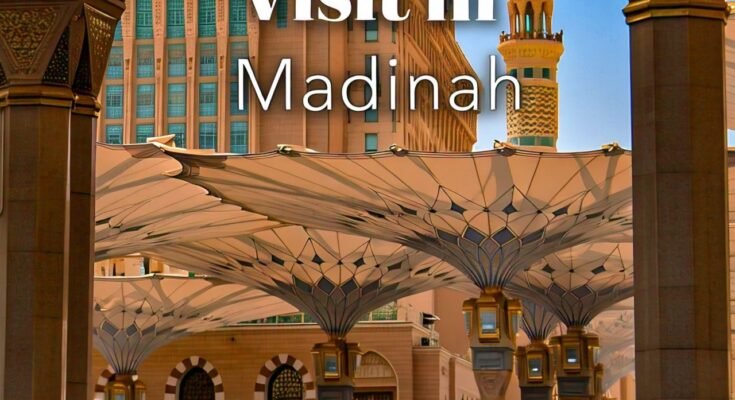


One Comment on “Top 20 Places to Visit in Madina | Amazing & Best Places to Visit in Madinah”